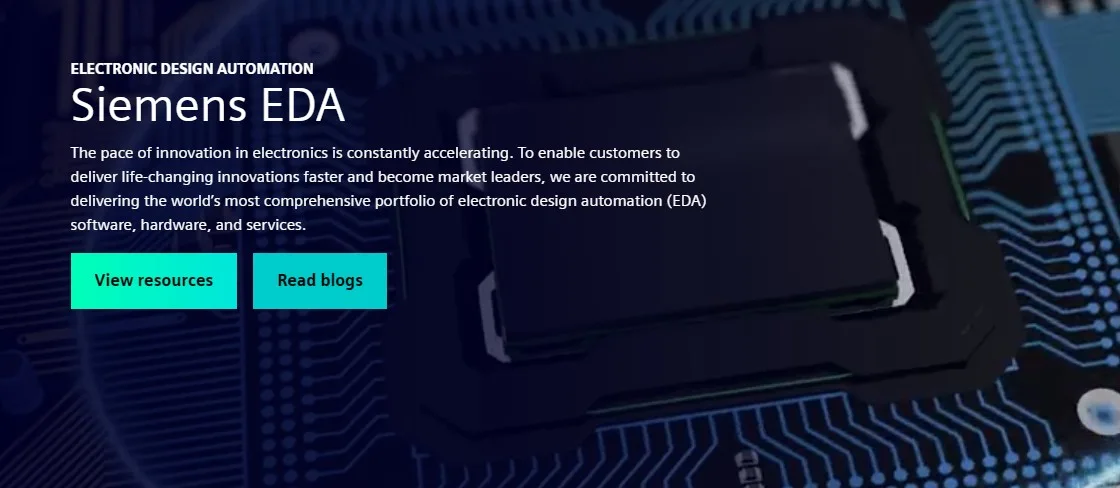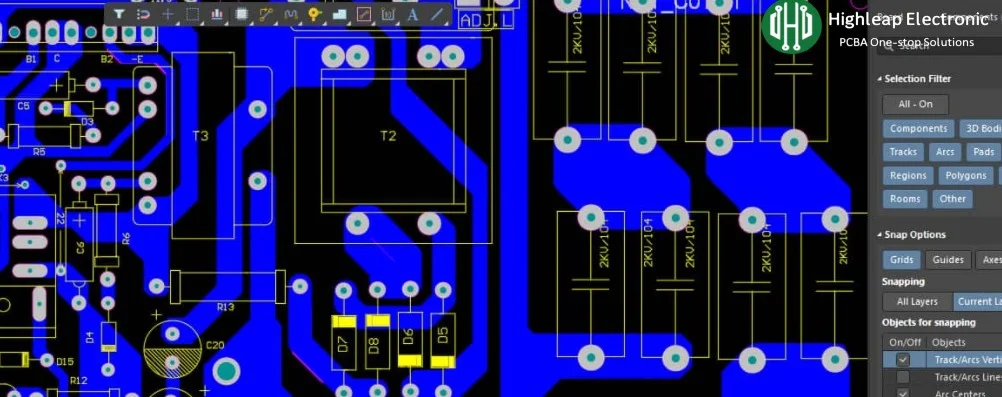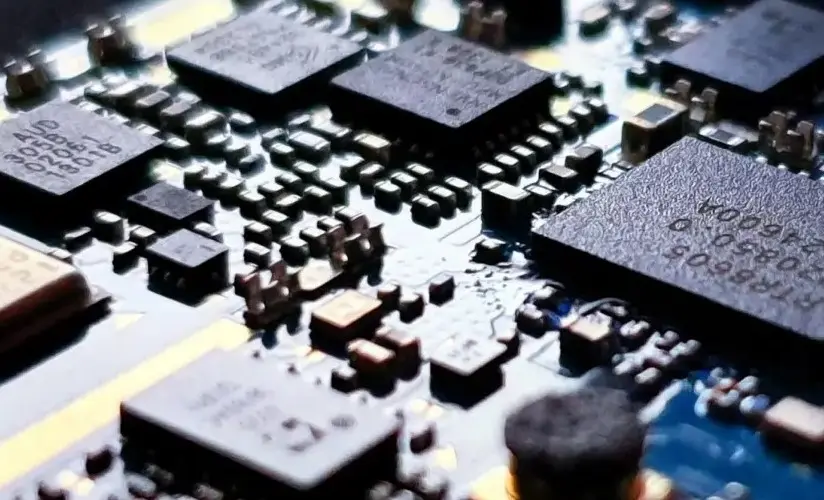Back to blog
10 Popular Circuit Board Design Software Tools in 2024

circuit board design
Introduce the pivotal role of PCB (Printed Circuit Board) design software in electronics manufacturing, highlighting its significance in driving technological advancements across various industries. Explain how these tools not only enhance design efficiency but also ensure the precision and functionality of the final products.
The Evolution of PCB Design Tools
The evolution of PCB design tools is like the history of technological evolution. From the original crude manual drawing method, which was difficult to outline every line, to the emergence of computer-aided design tools, it has brought about huge changes. It is gradually becoming intelligent and integrated, making the complex design process orderly and efficient, and constantly promoting the development of electronic technology.
PCB design tools have come a long and exciting evolution. Once upon a time, design relied on meticulous craftsmanship and was full of uncertainties and limitations. However, with the advancement of technology, various advanced CAD tools have sprung up. They are powerful and constantly improving. From schematic drawing to wiring optimization, from simulation to manufacturing file generation, every advancement has improved PCB design. A new chapter has opened, witnessing the magical power of technology.

Circuit board design software–Altium
Criteria for Evaluating PCB Design Software
Functionality and Features: High-quality PCB design software should possess a comprehensive set of essential features. Schematic capture is crucial for accurately representing the electrical circuit design. A powerful layout editor allows for precise placement of components and routing of traces. Simulation capabilities are essential for verifying the performance and functionality of the designed PCB before actual fabrication. Additionally, features like autorouting, design rule checking, and 3D visualization enhance the overall design process.
User Interface and Experience: A user-friendly interface is of paramount importance in PCB design software. An intuitive and well-organized interface simplifies the design process, reduces learning curves, and enables designers to focus on creativity and problem-solving. Easy navigation, clear visual indicators, and customizable toolbars and shortcuts enhance design efficiency. Ergonomic design and real-time feedback contribute to a seamless and productive user experience.
Integration Capabilities: The ability of PCB design software to integrate with other engineering tools is highly valuable. Seamless integration with CAD systems, circuit simulation tools, and manufacturing software streamlines the design workflow and reduces errors. Support for multi-disciplinary collaboration allows teams from different fields to work together effectively, ensuring that the PCB design meets all requirements. Interoperability with industry-standard file formats further enhances the software’s compatibility and usability in a collaborative engineering environment.

Circuit board design software
Comprehensive Review of Top 10 PCB Design Software
Each software will be reviewed in detail, covering its strengths, weaknesses, unique features, and ideal use cases.
- Altium Designer
- Comprehensive analysis of its environment, focusing on high-speed design features, 3D modeling, and real-time simulation capabilities.
- Siemens PADS
- Discuss its tailored solutions for advanced circuit simulation, thermal analysis, and design for manufacturability.
- Cadence Allegro
- Explore its utilities for high-density interconnect (HDI) designs and complex board geometries, favored by large-scale manufacturers.
- Eagle (Autodesk)
- Highlight its accessibility for hobbyists and small enterprises, along with its seamless integration with Fusion 360.
- ORCAD
- Detail its schematic design tools, advanced routing technologies, and robust simulation features.
- KiCAD
- Review this open-source platform’s capabilities for hobbyists and professionals alike, focusing on its community-driven enhancements.
- Fritzing
- Explain its niche appeal for educational purposes and prototyping, emphasizing its unique breadboard visualization.
- Upverter
- Assess its web-based platform for collaborative design and its appeal to startups and educational sectors.
- EasyEDA
- Analyze its cloud-based operation, cross-platform compatibility, and integration with JLCPCB for seamless manufacturing transitions.
- Proteus
- The Proteus electronic CAD solution, was developed by Labcenter Electronics Ltd., a company founded by John Jameson in 1988 in the United Kingdom. Widespreaded, Proteus is marketed in over 50 countries.

Circuit board design software–Altium display effect
Emerging Trends and Future Directions
Innovations on the Horizon: In the future of PCB design software, we can anticipate exciting developments. AI-driven design automation is likely to become more prevalent, where intelligent algorithms assist in optimizing layouts, suggesting component placements, and even automating complex routing tasks. This could significantly enhance design efficiency and quality. Cloud-based collaboration will also gain more traction, enabling designers from different locations to work simultaneously on a project in real-time, with seamless data sharing and version control. Additionally, advancements in virtual and augmented reality may offer new ways to interact with and visualize PCB designs.
Impact of 5G and IoT: The rise of 5G and IoT is having a profound impact on the evolution of PCB design tools. With 5G demanding high-speed and low-latency connections, PCB designs need to accommodate the increased complexity of signal integrity and power management. IoT devices’ proliferation is driving the need for smaller, more power-efficient PCB designs. This requires advanced design software that can handle the miniaturization and integration challenges, as well as support for wireless connectivity and power optimization. The software will need to adapt to ensure that PCB designs can meet the stringent requirements of these emerging technologies, opening up new frontiers in PCB design capabilities.
Choosing the Right Software for Your Needs
When selecting PCB design software, consider project complexity, component count, and specialized features required (e.g., high-speed or RF design). Ensure compatibility with your components and technologies. Assess user interface intuitiveness, collaboration support, and integration with other tools. Evaluate reputation, reviews, and available training. Factor in scalability, license management, and long-term support.
For cost analysis, weigh subscription flexibility against long-term expenses. Assess initial investment versus potential benefits. Premium features may justify extra costs if they enhance project quality and efficiency. Consider potential time savings and error reduction. Find the balance between cost and software effectiveness in meeting your organization’s needs.
Conclusion
Circuit board design software plays a vital role in electronics manufacturing, driving technological progress in various industries by improving design efficiency and ensuring the accuracy and functionality of the final product. Evolving from manual methods to intelligent integrated systems, these tools revolutionize the design process, making it more organized and efficient. When selecting circuit board design software, key criteria include functionality and features, user interface intuitiveness, integration capabilities, reputation and cost analysis.
FQA
What is the role of 3D visualization in PCB design software?
3D visualization in PCB design software allows designers to view their circuit board designs in a real-world context, facilitating better spatial understanding and component placement. This capability is crucial for detecting potential interference issues and ensuring the physical compatibility of components before the manufacturing phase.
How does autorouting enhance the PCB design process?
Autorouting is a feature in PCB design software that automatically generates the optimal paths for electrical connections between components. It speeds up the design process, reduces human error, and ensures efficient use of space, which is particularly beneficial in complex or high-density circuit board designs.
Can PCB design software handle the unique requirements of RF (Radio Frequency) circuit designs?
Yes, advanced PCB design software typically includes specialized tools and features to handle RF designs, which require careful handling of component placement and trace routing to maintain signal integrity. These tools help in simulating and optimizing RF signal behaviors to ensure functional and compliant RF applications.
What is the significance of design rule checking (DRC) in PCB design software?
Design rule checking (DRC) is a crucial feature in PCB design software that automatically checks the layout of a circuit board against predefined rules and standards. This feature helps identify and rectify potential issues like spacing violations or electrical shorts, ensuring that the PCB design is manufacturable and reliable.
How do simulation tools within PCB design software improve the reliability of circuit boards?
Simulation tools within PCB design software allow designers to test and verify the behavior of a circuit under various conditions before physical fabrication. This includes checking for voltage and current loads, thermal stresses, and electromagnetic compatibility. Simulation helps in predicting and solving potential functional issues, enhancing the reliability and performance of the final product.
PCB & PCBA quick quote
Related Articles

What is the difference between SMD and SMT?
PCB SMTSurface Mount Technology (SMT) and Surface Mount Devices (SMD) are crucial concepts in the field of electronics manufacturing, specifically in the assembly of printed circuit boards (PCBs). Both terms are integral to the modern methods of producing electronic...

Flexible PCB Cost Optimization Strategy
flexible PCBIn the realm of contemporary electronics, the proliferation of flexible PCBs stands as a testament to the industry's evolution toward miniaturization and functionality. Unlike the more traditional rigid PCBs, which benefit from simpler production...

Enhance Your PCBA Project:Comprehensive Guide to DIP Package
DIP PCB design drawingIn the rapidly evolving world of electronics manufacturing, understanding the impact and evolution of component packaging technologies such as the Dual In-Line Package (DIP) is crucial for any PCBA project. Originally introduced by Fairchild...

High Volume Turnkey PCB Assembly Services
PCB assembly servicesPrinted Circuit Board Assembly (PCBA) is a critical process in electronics manufacturing, where various electronic components are soldered onto a PCB to create a functional electronic device. This comprehensive guide explores the PCB assembly...
Take a Quick Quote
